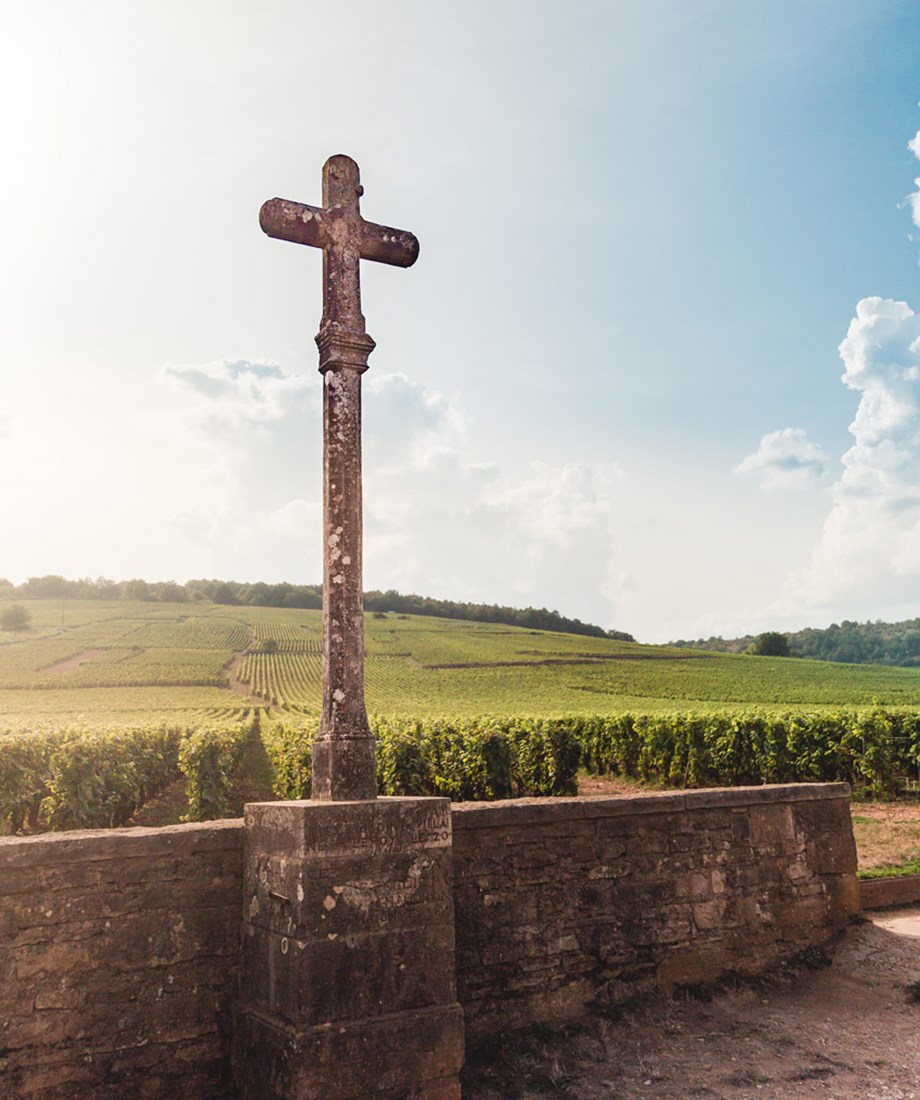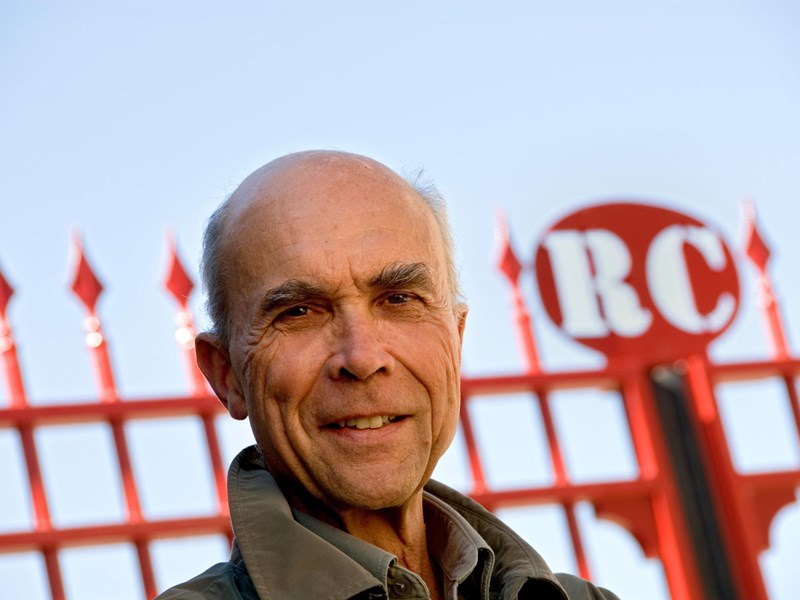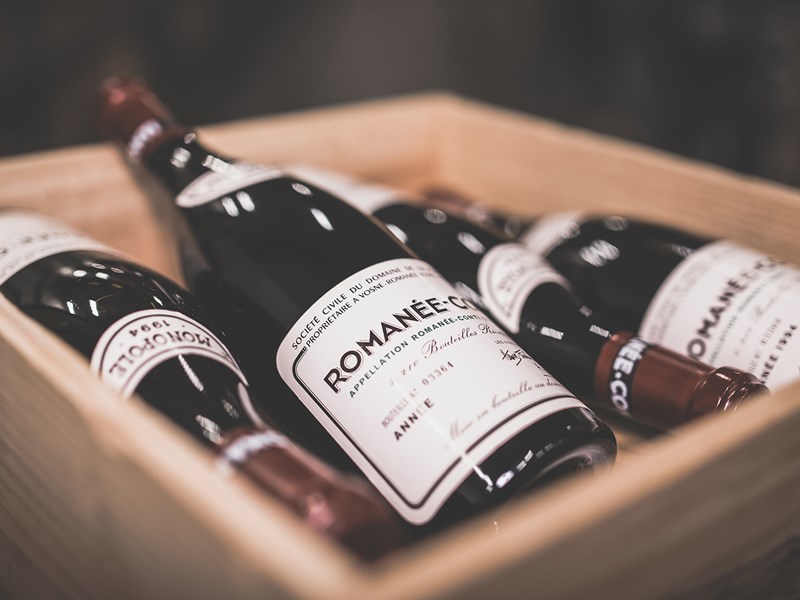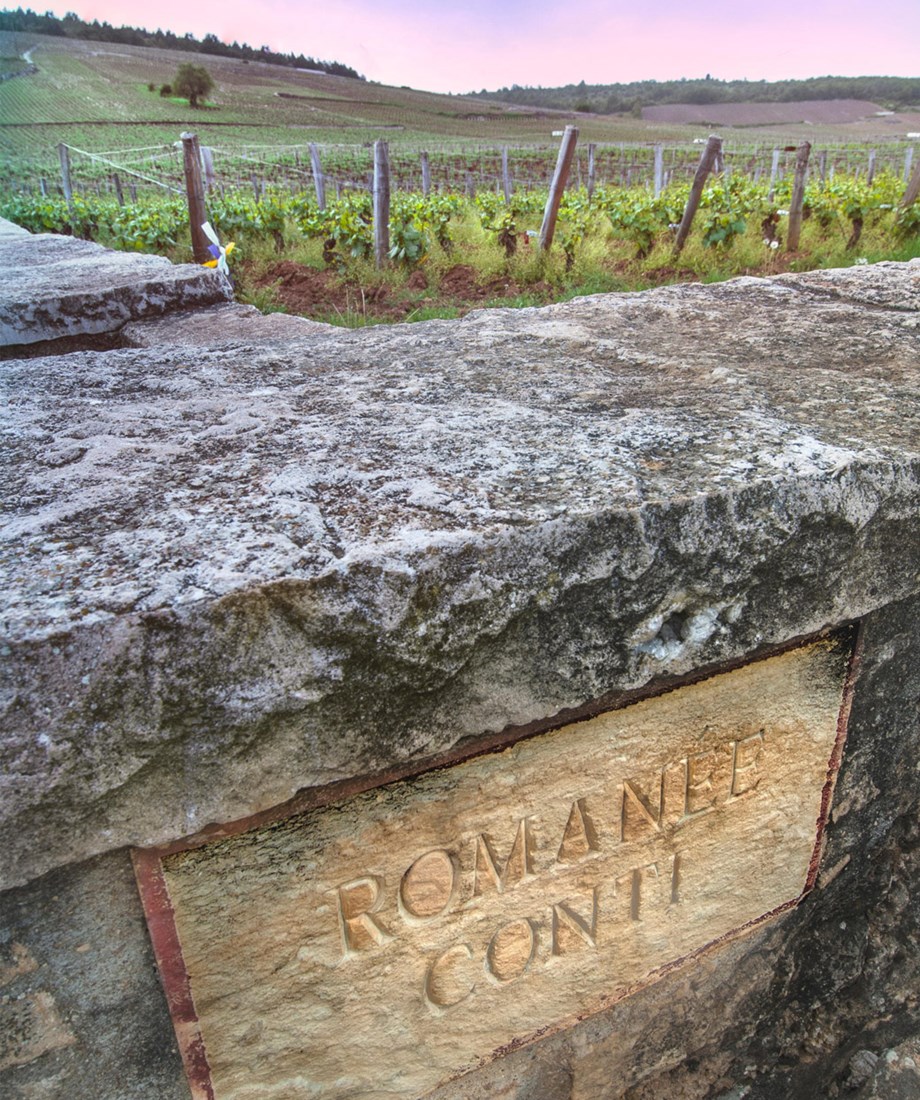Article - RareWine Academy
Portrait Of The Legendary Domaine de la Romanée-Conti
Romanée-Conti has an almost magical resonance among wine lovers all over the world and gives goosebumps to even the toughest wine critics. Learn all about legendary DRC...
UPDATE: Since this portrait was written, there have been changes at Domaine de la Romanée-Conti. Get the latest in the article: Significant Changes At Domaine De La Romanée-Conti Make The Future Interesting
"The purest, most aristocratic, and most intense example of Pinot Noir you could possibly imagine. Not only nectar: a yardstick with which to judge all other Burgundies."
Quote: Clive Coates (wine critics) on Romanée-Conti
Romanée-Conti is not only the name of the most famous vineyard in the world but also the name of perhaps the best wine producer of all time.
In the village of Vosne-Romanée, in the heart of Burgundy, we find the legendary Domaine de la Romanée-Conti, named after the vineyard, itself. Domaine de la Romanée-Conti, often referred to simply as DRC, has a long and remarkable history that has led to the wines from DRC being widely recognized as some of the most interesting in the world - both from a drinking perspective, but certainly also from an investment perspective.
Romanée-Conti From Vineyard To Domain
The legend of the Romanée-Conti vineyard goes back a long way and is first mentioned in 1232 when the vineyard was owned by the Monastery of Saint-Vivant. The monks were the largest landowners during that period in Vosne-Romanée and owned most of what we know today as Grand Cru vineyards. Even back then, when the vineyard was still called "Cru de Clos", it was considered one of the very best parcels. The wines from here were traded at more than 6 times the price of the wines from Clos de Vougeot, the largest Grand Cru vineyard in the area.
Four centuries later, the vineyard was taken over by the Belgian nobleman Philippe de Croonembourg through marriage and changed its name to "La Romanée". Romanée-Conti has no direct connection with the vineyard we know today as La Romanée. It is nowadays a neighbor of the Romanée-Conti vineyard, but has a completely different soil and thus a different character.
In 1760, the vineyard changed hands again, when it was bought by the Prince of Conti, Louis François I de Bourbon, who added "Conti" to the name, and from here Romanée-Conti is referred to as the vineyard we know today. At that time, the vineyard was traded at 10 times the price of another of the most prestigious vineyards in the area, Clos de Beze, which had also changed hands 10 years earlier.
Before, during, and after the French Revolution, there were changing owners until Jacques-Marie Duvault-Blochet bought the vineyard in 1869. He expanded the domain into what we know today, adding parcels on the grand cru vineyards of Échezeaux, Grands Échezeaux, and Richebourg to those already known, Romanée-Conti and La Tâche. Since then, DRC has been the estate in Burgundy with the most impressive lineup.
Subsequently, parcels at prominent addresses such as Romanée Saint-Vivant, Corton, Montrachet, Batard-Montrachet were also acquired and, from the 2019 vintage, a lease was signed on Corton-Charlemagne. All vineyards are classified as Grand Cru, which means that all wines are at the highest classification level in Burgundy. The DRC also owns a small parcel of land in Haut Cotes-de-Nuits, but as the current manager of DRC, Aubert de Villaine, says; "This terroir is not good enough at all to be included under the DRC name".
 The world famous symbol of the RomanéeConti vineyard. (credit Phillip Gow / iStockphoto)
The world famous symbol of the RomanéeConti vineyard. (credit Phillip Gow / iStockphoto)
Management And Ownership Of Domaine De La Romanée-Conti
Impressively, Domaine de la Romanée-Conti has been owned by the same family since 1869 and looks set to remain so for many years to come. Rumors of sales to global syndicates have otherwise swirled in the narrow streets of Vosne-Romanée. Still, the family has now established a business that should be able to withstand acquisition attempts. In contrast to what we saw with Clos de Lambrays and Clos de Tart, both of which were taken over by large French corporations. It has always been the case that the two sides of the family each had a manager in the daily running of the business, which is still the case. That makes for a good, healthy balance.
Today, the Domaine is run on the exterior by Aubert de Villaine, who has been co-manager since the early 1970s - in the years from 1973 to 1992 together with the prestigious Madame Lalou Bize-Leroy. This period, in particular, was decisive for the estate as it switched to organic wine growing and gained even more control over the processes in the vineyard. Unfortunately, the collaboration ended in 1992 after internal disagreements, but Madame Leroy still owns 25% of DRC. Today, the daughter of Lalou Bize-leroy, Perrine Fenal is the other co-manager.
The de Villaine family has owned the Domaine de la Romanée-Conti since 1869 when Jacques-Marie Duvault bought the domain. Since then, the estate has been inherited and the de Villaine family, represented by Aubert, now owns half of the business. The other half was traded in 1942 when Jacques Chambron sold his shares to Henri Leroy - father of Madame Leroy.
Aubert de Villaine is a very detail-oriented man and takes care of everything at the DRC, which he prefers to call just Domaine de la Romanée-Conti, is as it should be. "Shortcuts don't give the vineyards the justice they deserve," he once said.
In the wine cellar, impressively, the same family also allows the craft to be inherited. Bernard Noblet has been cellar master all his life, and his son is ready behind the scenes to take over. This continuity in the cellar is essential because they do not want to change the style of the estates’ wines.
Since this portrait was written, there have been changes at Domaine de la Romanée-Conti. Get the latest in the article: Significant Changes At Domaine De La Romanée-Conti Make The Future Interesting
 Aubert de Villaine, the main man at Domaine de la Romanée-Conti (credit: Ian Shaw / Alamy Stock Photo)
Aubert de Villaine, the main man at Domaine de la Romanée-Conti (credit: Ian Shaw / Alamy Stock Photo)
How Romanée-Conti Is Produced
The famous vineyards are nurtured and cared for according to the highest standards and have also been certified organic for many years. In recent years, principles from biodynamic thinking have also been incorporated. This does not mean that Aubert de Villaine endorses all of Rudolf Steiner's thoughts, but because it strengthens the vineyards and gives them a better natural environment in which to thrive.
It is undoubtedly the vineyards that provide ‘the gold’ for production. In the cellar, as little as possible needs to be done. In the vineyards, the concept of 'massal-selektion ' of the old clones from the pre-1945 Romanée-Conti vineyard, the last harvest before the vines were replaced, is used. These clones have their own character and yield extremely little. The result is that in most of the estates' vineyards you harvest about half of what is allowed, but you get wines with a perfect balance. These clones are still being refined. As always with vineyard work, it is a long-term process that spans several generations. This is actually one of the great strengths of a family-owned estate, as you have better control of the calm process.
In the cellar, traditional methods are followed to full satisfaction of the requirements. However, they experiment with new temperatures, different fermentations for the barrels, percentages of stems in the must during fermentation, and much more. Aubert de Villaine is in favor of letting the must work as naturally as possible, as this gives the best expression of the terroir on which the wine grows.
All grapes are harvested by hand by the same team year after year. After arriving at the winery, the grapes are sorted again to bring only healthy grapes to the cellar. There is no cold fermentation, so the must lay naturally until the actual fermentation begins after a few days. Every year, the wine is fermented in large old wooden barrels before being transferred to brand new barrels after a little more than 20 days. These are made by Francois Frere, the local cooper in Saint-Romain. Here, DRC has selected its own wood, which dries for 3-4 years before the 228-liter barrels are built. The wine lies on the barrels for just over two years before being bottled.
 Original wooden case with selected wines from legendary Romanée-Conti
Original wooden case with selected wines from legendary Romanée-Conti
The Magic By Which DRC Differs From All Others
In Burgundy, people always talk about what makes the difference. What is it that elevates one winemaker above his neighbor? At Domaine de la Romanée-Conti, many aspects play a role, but one is particularly relevant: The selection of the right clones of Pinot Noir to produce wines with the optimal flavor and profile.
In 1945, the last wine was made from ungrafted vines from the Romanée-Conti vineyard. That year, the DRC harvested only 2.5 hectares, in contrast to today, where the harvest is around 20 hectares, which is still far below the permitted 35 hectares. The family carefully selected the best clones from the vineyard and then cultivated them. In this way, the DRC now has its own clones of the vines that grew on the Romanée-Conti until 1945, before they were replaced. Incidentally, these are the same clones that recur in all of the DRC's vineyards, and this is perhaps one of the reasons why the wines each have a life of their own and are often in a league of their own when it comes to quality.
Grand Cru Vineyards In Vosne-Romanée
Besides the key personalities and the unique clones, there is of course the all-important factor, namely the vineyards themselves. The estate is located in Vosne-Romanée, where the six most important vineyards are located. The two best grand cru vineyards are owned as monopolies by the DRC (La Tâche and Romanée-Conti), which means that no one else produces wine on these vineyards.
The other wines are located in different vineyards, but what is probably most impressive is how large a share DRC owns in the other vineyards. Most producers often only own small parcels on a particular grand cru vineyard, but DRC is the largest owner on the four main vineyards.
Romanée-Conti
Without comparison, the most famous and mythical vineyard of all. 1.8 hectares owned as a so-called ‘monopole’ by the DRC. All the vines were newly planted in 1947, and an average of about 5,400 bottles are produced annually. 558,000 dollars was the price paid in 2018 for the most expensive bottle of wine ever. It was a Romanée-Conti 1945, just one of 600 bottles produced.
La Tâche
6.06 hectares also owned as a monopoly by the DRC. The vines are on average almost 60 years old. The annual production is just over 20,000 bottles. The vineyard is considered by wine connoisseurs to be the most elegant and is only a fraction behind Romanée-Conti in terms of quality.
Richebourg
3.51 hectares with vines averaging more than 50 years old. The DRC produces an average of 12,000 bottles per year. Richebourg is another of the almost mythical Grand Cru sites in Burgundy, and like the DRC itself says:” We readily lend to Richebourg the silky character of its neighbor Romanée-Conti and the firmness of La Tâche”. It does not get any more beautiful than this when you have to put the wines from Richebourg into words.
Romanée Saint-Vivant
5.28 hectares with vines of great age variation. Some were recently replanted to get rid of old clones that did not give the desired expression. The younger vines are bottled and sold as Vosne-Romanée 1er cru. In total, the vineyard produces about 18,000 bottles per year. The style is elegant and extremely flattering, a wine that is appreciated all over the world.
Grands Échezeaux
3.52 hectares with vines more than 60 years old. 13,800 bottles per year are produced from here. It is the joker in the Aubert de Villaines range. A wine that is more grand than Échezeaux for so to speak, distinctly more rustic and dreamily aristocratic. Here is more muscle, and a wine that gains from long-term aging, showing its true terroir.
Échezeaux
4.67 hectares with vines more than 40 years old. DRC produces about 16,000 bottles a year of Échezeaux, which is the little brother in the line-up. Échezeaux is usually the vineyard where the vines blossom first and therefore, the harvest normally starts at Échezeaux. The wine itself can best be described as a lighter version of its Grands Échezeaux, but with fantastic finesse.
Corton
2.3 hectares leased from Domaine Prince Florent de Merode. The first harvest was in 2009 and about 6,500 bottles are produced per year. The wine has a nice structure, but at the same time, the classic floral style DRC is known for. The wines from here only get better and better every year.
Montrachet
0.67 hectares with vines more than 70 years old and with a production of about 3,000 bottles in a normal vintage. Montrachet, legendary Le Montrachet itself! The most famous white wine vineyard in history, whose wines set the standard for all other white wines.
Corton-Charlemagne
2.9 hectares leased from Bonneau du Martray. Here, 5 parcels are cultivated, all according to biodynamic principles, as Martray does with his parcels. The five parcels are nicely spread out over the western side of the vineyard and are sure to produce another very desirable wine. The expected production will be around 10,000 bottles.
Domaine De La Romaneé-Conti Faces A Solid Future
Both children and nephews are ready behind the scenes to continue the perfectionism and the very special aura that surrounds the 80-year-old Aubert de Villaine. Over the years, he has carved out a position that makes him one of the most powerful personalities in the wine branch. The brand is widely known and always referred to with equal respect and admiration. The vineyards, which are among the best in the world already, are in better condition than ever before, the processes in the cellar are in order - in other words, nothing stands in the way of DRC's dominance for decades to come.
The wines produced at Domaine de la Romanée-Conti over the last 20-30 years are perhaps the best wines they have ever produced and some of the most expensive in the world. Having a case or two of them in stock would be a low-risk investment, similar to government bonds but with greater potential returns.
The storage potential of these wines is high, and the taste is downright adventurous. Even the lesser-known vintages produce wines of a very high standard that, over time, show wine lovers around the world the greatness of their terroir - if you can even get your hands on the drops, which are both mythical and enormously expensive.
 The mythical Romanée-Conti vineyard
The mythical Romanée-Conti vineyard
